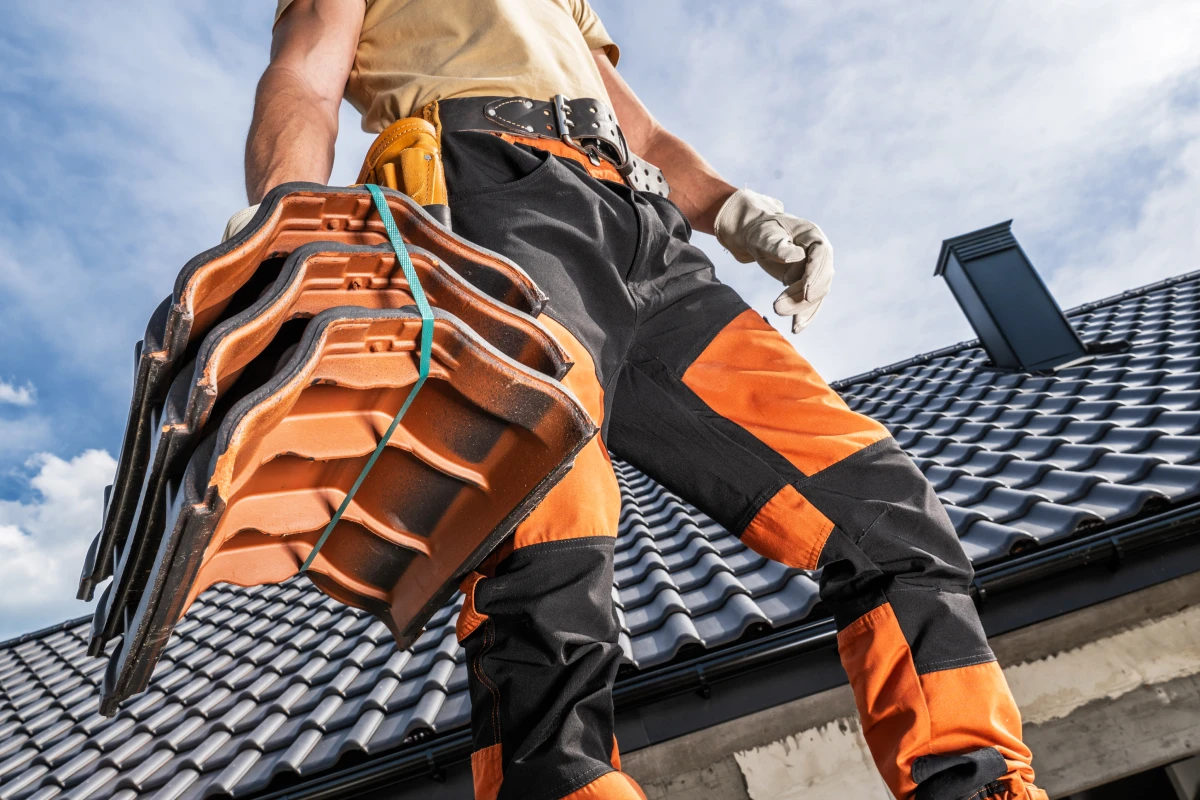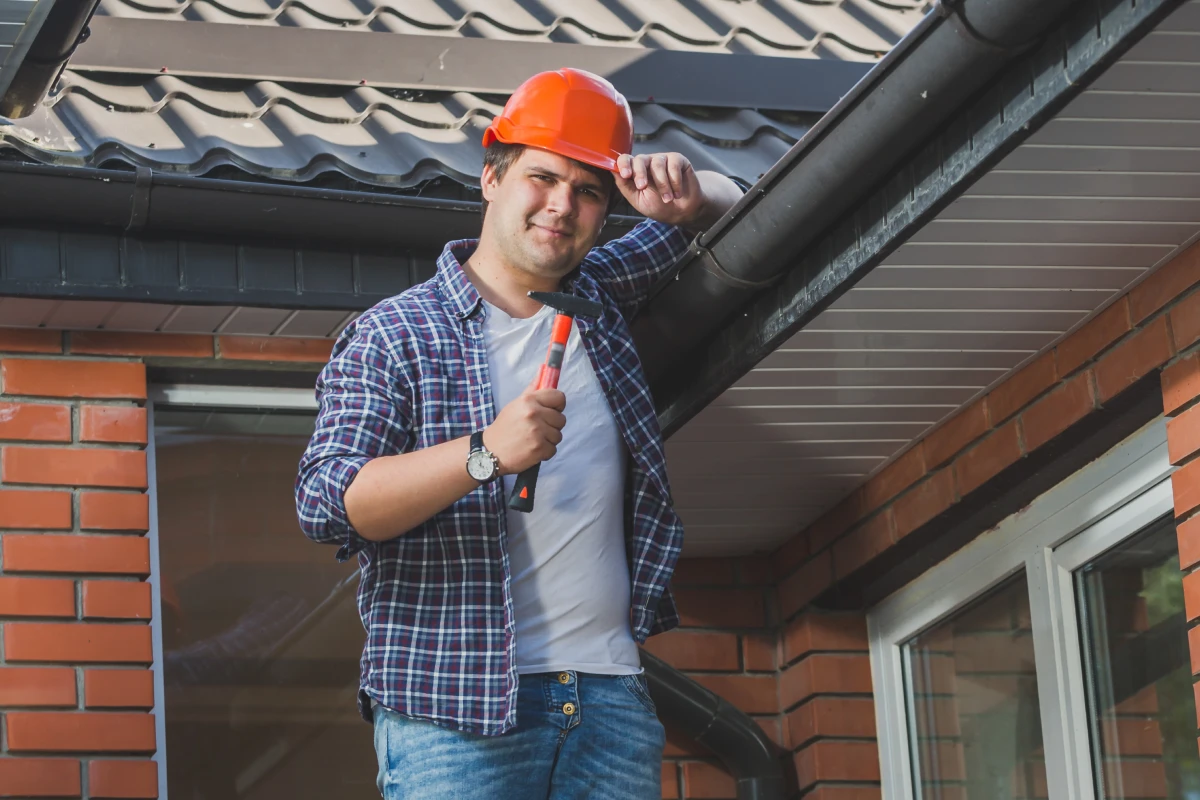An Honest Guide from a Roofer Who’s Up There Every Day
Northwest Indiana’s climate is no joke. Between heavy snow in the winter, humid summers, high winds, and dramatic freeze-thaw cycles, your roof sees it all. And whether you’re a new homeowner or your current roof is showing signs of wear, you’re probably asking:
“How long is my roof supposed to last?”
We get that question all the time. And as a roofing company that’s on hundreds of roofs a year across the Chicagoland and Northwest Indiana region, we’ve seen just about every scenario—good, bad, and ugly. This guide breaks down what you really need to know about roof longevity, especially if you live in this climate.
The Truth About Asphalt Shingles: Not All “Lifetime” Warranties Are Equal
Let’s start with what most homes in our area have: asphalt shingles.
Before 2008, shingles were clearly rated for 20, 25, 30, even 40 years. Then manufacturers changed the game, labeling most of their products as “lifetime” shingles. That sounds great—but in reality, it created a ton of confusion.
So, what does “lifetime” really mean?
In our professional experience, most asphalt roofs in Northwest Indiana last around 20 years—give or take depending on the product quality, installation, and ventilation.
Here’s what we’ve seen on real roofs:
- Cheap shingles + poor attic airflow? You might get 10–12 years.
- High-end shingles + professional install + proper ventilation? You could get 25–30 years or more.
And remember: the climate here speeds everything up. Ice, wind, hail, and temperature swings create a perfect storm for premature wear.
What Actually Affects Your Roof’s Lifespan?
A lot more than just the brand name.
1. Shingle Quality
Not all shingles are created equal. Some have a higher asphalt content, better granule adhesion, and thicker construction. Others are made with cheaper materials that just don’t hold up.
2. Installation
Even the best materials won’t last if the roof isn’t installed correctly. Nail placement, underlayment, flashing, starter courses—every detail matters. One shortcut could mean a leak in five years instead of fifteen.
3. Ventilation
This is the big one most people miss. Your attic needs balanced intake and exhaust ventilation to avoid moisture buildup and ice dams. Without it, your shingles literally bake from the inside out in summer and freeze from trapped condensation in winter.
4. Maintenance
Simple things like keeping gutters clear, trimming overhanging branches, and having your roof inspected every few years can add 5+ years to its lifespan.
What We See on the Roof Every Day
At Reliance Roof Troop, we’re not just guessing—we’re up there every single day. And based on what we’ve seen across thousands of inspections in the region, here’s a breakdown of real-life lifespans for different roofing materials:
Asphalt Shingles: 15–25 Years
- Most common in the region
- Prone to granule loss, algae growth, and curling
- Quality and airflow make or break lifespan
Metal Roofing: 40–70 Years
- Ideal for snowy climates (sheds snow, resists ice dams)
- Very low maintenance and long-lasting
- Needs professional installation to allow for expansion/contraction
Cedar Wood Shakes: 20–30 Years
- Beautiful and natural but high-maintenance
- Vulnerable to rot, mold, and insects without frequent treatment
- Not ideal unless you’re committed to upkeep
Tile Roofing (Clay or Concrete): 50+ Years
- Excellent lifespan if properly installed and frost-rated
- Very heavy, so roof structure must be reinforced
- Expensive but durable
Slate Roofing: 75–100+ Years
- Premium, high-end option with unbeatable durability
- Can outlast the house itself if maintained
- Costly and heavy, but worth it for long-term homes
Synthetic Roofing: 30–50 Years
- Composite, rubber, or polymer shingles
- Engineered for Indiana’s weather extremes
- Great blend of performance and low maintenance
What Homeowners Often Miss: The Ventilation Factor
You could buy the best shingle on the market—but if your attic ventilation isn’t right, it won’t matter.
Here’s what we do differently at Reliance Roof Troop:
- We assess and calculate your net free airflow during our inspection
- We improve both intake and exhaust systems (not just plug in a vent)
- We educate you on why ventilation matters—because it’s often the missing link
We’ve seen it firsthand: Proper airflow can literally double the life of your roof. It reduces attic heat in the summer, prevents condensation in winter, and keeps your shingles from aging prematurely.
Why Most Roofs Fail Too Soon (And How We Fix That)
Most roofs don’t fail because the shingles were “bad.” They fail because something was overlooked—ventilation, flashing, starter rows, nail placement, or underlayment.
When you work with Reliance Roof Troop, we don’t cut corners. Our roofs are built to last—and we’ll show you why each decision we make adds to that lifespan.
We take the time to walk you through:
- Product options based on your goals
- The science behind airflow and why it matters
- A detailed step-by-step process before we ever swing a hammer
We believe informed homeowners make better decisions—and that’s why our roofs consistently outlast the “average.”
Which Roof Is Right for You?
Here’s a simple breakdown based on your goals:
| Your Priority | Best Fit |
| Tight budget, short-term stay | Asphalt shingles |
| Low maintenance, great snow protection | Metal roofing |
| Long-term investment, historic home | Slate or clay tile |
| Rustic beauty, natural materials | Cedar shakes (with upkeep) |
| Modern look with engineered durability | Synthetic shingles (composite) |
Still not sure? We’ll help you weigh the pros and cons during your free consultation.
Final Thoughts: You Deserve a Roof That Actually Lasts
If your roof is over 15 years old—or you’re starting to see signs like curling shingles, dark streaks, or attic leaks—it’s time to schedule an inspection.
At Reliance Roof Troop, we don’t just sell roofs. We build systems that are designed to last longer, look better, and give you peace of mind.
Call us today at (219) 777-0284
Or book your complimentary inspection online
No pressure. No gimmicks. Just straight answers—and a roof you can rely on.
FAQs – Roofing in Northwest Indiana’s Climate
1. How long should a roof last in Northwest Indiana?
It depends on the material. Asphalt shingles typically last 20–25 years, metal roofs can last 40–70 years, and tile or slate can exceed 50–100 years with proper care. The freeze-thaw cycles, heavy snow, and high winds in our area can reduce lifespan if the roof isn’t properly installed or maintained.
2. What type of roof lasts the longest in this climate?
Slate and metal roofs offer the longest lifespans in Northwest Indiana. Slate can last over 100 years, and high-quality metal roofs often last 40–70 years. Both are extremely resistant to freeze-thaw damage, snow buildup, and wind.
3. How do freeze-thaw cycles affect roofing materials?
Water can seep into small cracks or pores in roofing materials, then freeze and expand. This causes cracking or splitting over time—especially in asphalt, tile, or wood. Choosing materials rated for freeze-thaw durability and ensuring proper installation and ventilation are key to preventing this.
4. What are the signs my roof might need replacement?
Common signs include missing or curled shingles, granule loss, leaks or ceiling stains, moss or algae growth, and visible sagging or soft spots. If your roof is over 20 years old, it’s smart to schedule an inspection even if you haven’t seen issues yet.
5. How can I extend the life of my roof in this region?
Keep gutters clean, ensure attic ventilation, remove moss or debris regularly, and inspect after storms. For asphalt and wood roofs, proper attic insulation helps prevent ice dams. For metal or tile, inspecting flashings and sealing any worn areas will go a long way.
6. Is metal roofing a good choice for Northwest Indiana winters?
Yes—metal roofing is one of the best choices for snowy climates. It sheds snow easily, resists ice damming, and holds up well against wind and temperature swings. Just make sure it’s properly installed with fasteners that account for thermal expansion.
7. Do I need to worry about ice dams on my roof?
Yes—ice dams are common here due to snow buildup and inconsistent attic insulation. They can cause water to back up under shingles or tiles. Prevent them by improving attic insulation and ventilation and clearing gutters before winter.
8. Is it worth investing in a longer-lasting material like tile or slate?
Absolutely—if you plan to stay in your home long-term and want a roof that provides beauty, durability, and lower lifetime cost, tile or slate are great choices. They cost more upfront but can last decades longer than asphalt with less frequent replacement.
9. Can I walk on my roof to inspect it myself?
It depends on the material. You can carefully walk on asphalt and metal roofs if necessary, but tile, slate, and wood shake roofs can crack or shift underfoot. It’s safer to hire a pro—especially for high or steep roofs.
10. When should I call a professional roofer for an inspection?
You should schedule a professional inspection every 1–2 years or after a major storm. Also, if your roof is over 15 years old or showing any signs of wear (leaks, stains, shingle damage), it’s best to have it checked before small problems become big ones.


